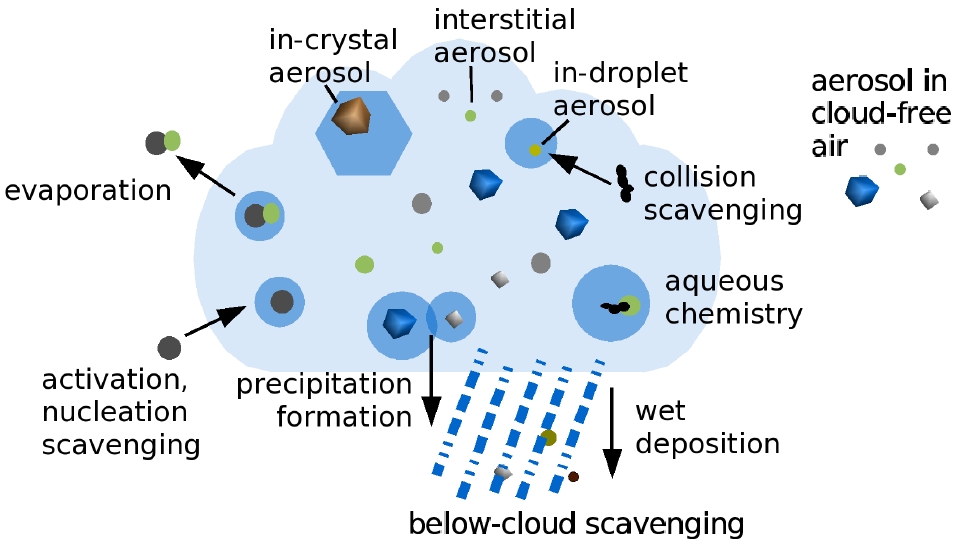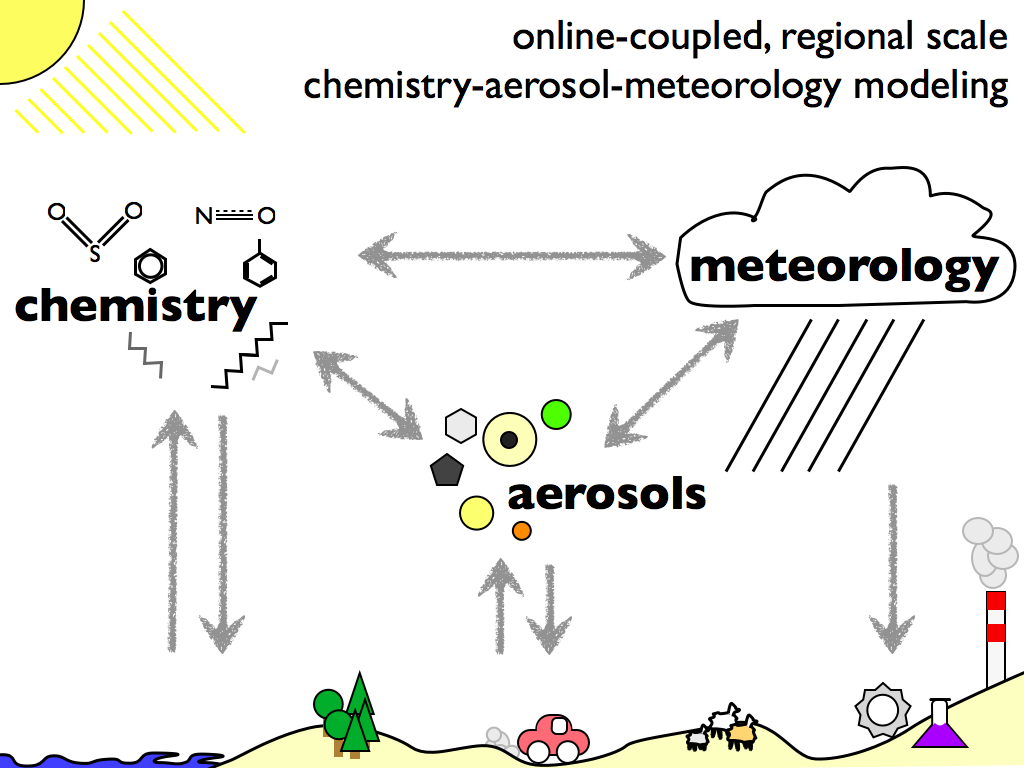Climate Stabilization: Role of Chemistry-Aerosol-Cloud Interactions
Project led by: Christoph Knote (Empa) and Sara Pousse-Nottelmann (IAC, ETHZ)
Lead scientists and supervision: Ulrike Lohmann (IAC, ETHZ) and Dominik Brunner (Empa)
Contributing scientists: Stefan Brönnimann (IAC, ETHZ), Brigitte Buchmann (Empa), Christoph Hüglin (Empa), Thomas Peter (IAC, ETHZ), Matthias Rotach (MeteoSwiss), Sonia Seneviratne (IAC, ETHZ)
An adequate understanding of aerosol-cloud-climate interactions is of major importance for our capability to reliably predict the future climate. The representation of aerosol-cloud-climate interactions and feedbacks currently remains a large source of uncertainties in the climate prediction on decadal timescales with potential strong regional differences, and cloud feedbacks constitute a primary source of differences between climate model estimates of the equilibrium climate sensitivity for a CO2 doubling. In addition, aerosol-cloud interactions are also closely linked to air pollution. Sulphate, black carbon, organic carbon and nitrate aerosols have a substantial anthropogenic component. In densely populated areas in Europe, anthropogenic aerosols, which are largely composed of organic matter and nitrate, are dominating the total mass of PM10 and PM2.5. This implies that future changes in anthropogenic emissions of air pollutants will likely have a significant impact on cloud formation, cloud properties and precipitation, and hence on climate. Photochemical aging of particles and heterogeneous reactions of air pollutants on their surfaces can change the physicochemical properties of both natural and anthropogenic aerosols. In addition, climate change is also expected to feed back on air quality in several important ways through e.g., emissions of biogenic VOCs. Interactions between chemistry, aerosol, cloud and climate are extremely complex and involve processus spanning an enormous range of spatial and temporal scales from the microscopic (e.g. cloud droplet nucleation) to the global scale (e.g. cloud radiation feedbacks) and the degree of details and resolution needed to adequately represent these processes in global models remain unclear.
The goal of the present project is to investigate chemistry-aerosol-cloud-climate interactions using a multi-scale approach in two sub-projects.
COSMO-CCLM and ECHAM5

In the first sub-project, a similar configuration of aerosol physical processes (M7 aerosol module) and aerosol-cloud interactions (coupled double-moment cloud microphysics scheme) will be implemented in a regional climate model (COSMO-CCLM) and a global climate model (ECHAM5). In this process, the M7 aerosol module will be extended by an explicit and detailed treatment of cloud-borne particles following the approach developed by Hoose et al. (2008) for ECHAM5. Distinction between in-droplet and in-crystal particles will be made to more physically account for processes in mixed-phase clouds, such as the Wegener-Bergeron-Findeisen process and contact and immersion freezing. The new scheme will allow an evaluation of the cloud cycling of aerosols. In a further part, the parameterization of heterogeneous freezing processes will be ameliorated. The regional model will be set up for Europe and for Switzerland using a nesting technique. The process understanding and the model evaluation will be performed on the local and regional scale.
For additional information, please contact .
Further reading:
Download PhD project “Impact of aerosol-cloud-interaction on regional climate” (PDF, 1.3 MB) C2SM newsletter 7 (September 2011), on page 4.
COSMO-ART

In the second sub-project, the numerical weather prediction model COSMO-ART which incorporates detailed representation of tropospheric chemistry and aerosols, including their interactions with meteorology, will be used up to the kilometer scale. It will be set up for Europe and - on a finer scale - for Switzerland. High resolution emission inventories will provide the basis for realistic chemistry scenarios. The simulations will then be validated against extensive measurement data available at Empa. The effects of the improved description of aerosols on climate will be quantified, in close collaboration with the first sub-project.
For additional information, please contact .
Further reading:
Download PhD project “Role of chemistry-aerosol-cloud interactions in climate stabilization” (PDF, 1 MB) C2SM newsletter 6 (June 2011), on page 3.
Download PhD project “Impact of Aerosolcloud-interaction on regional climate” (PDF, 1.3 MB) C2SM newsletter 7 (September 2011), on page 4.